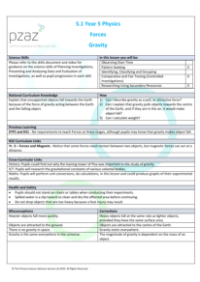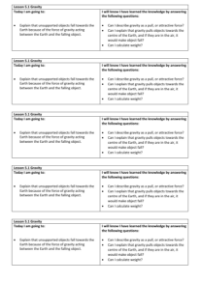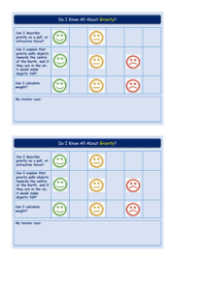Gravity - Results Tables

Science Resource Description
The exploration of gravity's influence on falling objects is presented through a series of comparisons and experiments. A table listing pairs of objects, one heavier and one lighter, such as a shoe versus a pencil, a football versus a ping pong ball, and a book versus a pom pom, is used to determine which object falls more quickly, with the 'winner' column left blank for results. This simple yet effective method aims to challenge the common misconception that heavier objects fall faster due to gravity, a concept that can be tested through practical observation.
Further investigation into the relationship between weight and mass is conducted through a table where mass in grams is listed alongside the corresponding weight in newtons, with a column to calculate the weight-to-mass ratio. This provides a mathematical perspective on the concept of gravitational pull on different masses. Another aspect of gravity's effect is examined by measuring the time it takes for an object to fall from various heights, with data recorded at 50cm intervals, to understand if gravity impacts the speed of descent. Additionally, a section on planetary gravity lists various celestial bodies, including the Sun, Earth, and planets like Mercury and Mars, with columns for gravitational constant (measured in meters per second squared) and weight, allowing for a comparative study of how gravity varies across different locations in our solar system.






